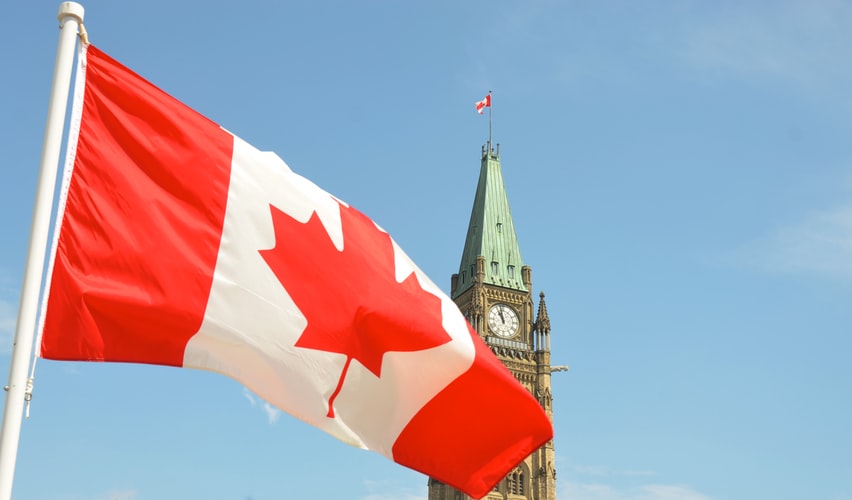Table of Contents
As a student studying abroad in Canada, the first thing you must do is to open a student bank account in Canada. Opening a bank account in the country that you are studying in could provide you with many benefits as a student. To open a student bank account in Canada you could visit the bank in-person or do it online. When you’re able to, follow these steps to set up a Canadian bank account.

A Guide To Student Bank Accounts In Canada
1. Gather Your Documents
You’ll need at least two pieces of identification (ID) to open a student bank account in Canada. Acceptable identification may include your,
- Passport
- Study permit
- Letter of acceptance
- Travellers’ cheques
You should also note that some branches require you to provide your local home address in order to open a new account.
2. Select A Bank/Credit Union
All of the best bank accounts for students in Canada are spread over the country in many branches and there are also several credit unions for you to choose from. They all offer a variety of accounts and services, interest rates, and service charges. Consider these features, as well as their location, hours of operation and online banking features, when you choose a financial institution. A bank that is close to your university would be the perfect option for you. Here is a list of the best student bank accounts in Canada:
- Bank of Montreal (BMO)
- Canadian Imperial Bank of Commerce (CIBC) (set up your Canadian bank account from your home country)
- Hongkong and Shanghai Banking Corporation (HSBC)
- Royal Bank of Canada (RBC)
- Scotiabank
- Simplii Financial (set up your Canadian bank account from your home country)
- Toronto-Dominion (TD) Canada Trust
- Education Credit Union
- Libro Financial Group
- Kindred Credit Union
- Your Neighbourhood Credit Union
Once you have chosen a bank or credit union, make an appointment to set up your account. You can book an appointment online or by phone.
3. Choose Your Account Type
Set up a student bank account in Canada, it could be one account or more. Most people have both a checking and a savings account.
Checking Account:
This everyday checking account for students earns little or no interest. You can regularly withdraw money, pay credit card bills, and write cheques from it.
Savings Account:
This account type is useful for saving money over longer periods of time as your money earns more interest here than in a checking account.
Foreign Currency Account:
If you want to keep some money in a different currency, you may want to open this type of account.
After you set up a Canadian bank account, ask the bank advisor about your bank’s terms and conditions, and transaction fees as these vary between the banks.
4. What Happens Next?
When you open a student bank account in Canada, your Canadian bank representative will give or send you a bank card, also known as a ‘debit card’. You’ll be given a PIN (Personal Identification Number) to access your account through an ATM or debit machine. Your PIN is your only protection against unauthorized use, so do not reveal it to anyone or even bank employees.
This Debit Card Allows You To:
Use Automated Teller Machines (ATMs) for withdrawals, deposits, and bill payments.
Pay for items at stores and restaurants that accept debit card payments. This is a good alternative if you prefer not to carry too much cash on you. Most financial institutions offer internet banking, which allows you to check your account balance, pay your bills, and transfer money without needing to visit your branch in person. Financial institutions are usually open during the day, Monday to Friday, and closed on holidays. Some branches are open on evenings and weekends.
5. Other Services To Consider
Signing Up For A Credit Card
In Canada, banks generally issue one of three credit cards:
- Visa
- MasterCard
- American Express
Visa and MasterCard are accepted at most major stores and restaurants. Credit cards are convenient, allowing you to make purchases without carrying cash and giving you a grace period before you have to pay for your purchases. Just like your debit card, your credit card will also have a PIN (Personal Identification Number) that you should not share with anyone.
If you consider applying for a credit card, understand the terms and conditions of repayment and be certain you can pay your credit card balance on time when your bill arrives. If you do not pay your credit card bill by the due date, the company will charge you interest on the total amount of the bill, regardless of any amount you paid off over the course of the month. You’ll also be charged interest on any purchases made after the due date.
Taking Out Bank Loans And Lines Of Credit
When you set up your student bank account in Canada, some banks may offer you a loan or line of credit. If you accept, you may be required to provide some collateral or a safety deposit in the form of cash or goods. This collateral is usually forfeited if you do not make the payments on your loan. Once you start using the credit, you’ll be charged a high interest rate if you do not pay it back according to the bank’s payment terms. If you consider a loan, be confident that you can make the payments to avoid financial penalties and discuss the conditions of your loan with the bank advisor.
PS: If there’s anything more you’d like us to know about. Add it to the comments section!
Thank you for reading this blog on ‘How To Open A Student Bank Account In Canada’ If you’d like to read more, here are some blogs that might be of interest to you:











0 Comments